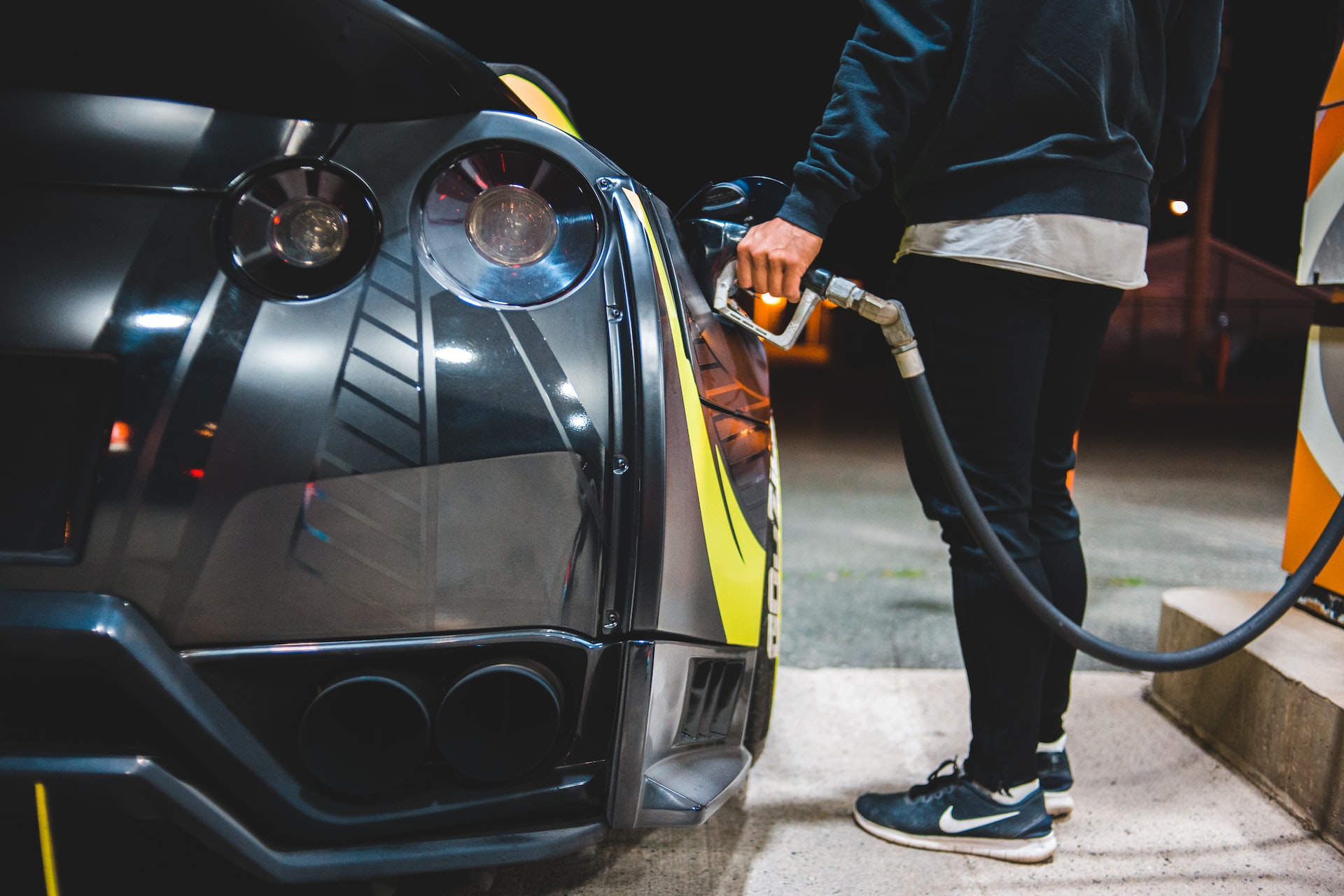Illinois Gas Tax 2021
Illinois doesn’t hold back when it comes to taxing anything car related. Beginning back on July 1, 2021, which was the beginning of a weekend where many people travel for a holiday, the gasoline and other fuel taxes increased throughout Illinois. Some counties experienced a bigger hit than others, with DuPage and Lake being the highest increases. This marks the third consecutive year the gas tax has risen and it will most likely continue to do so annually.
Why and How Much Is the Increased Gas Tax?

Image By Erik Mclean Is Free To Use Under The Unsplash License
The increase brings the state’s gas tax up a half-cent per gallon, making the various fuel taxes as follows:
- Gasoline/gasohol: $0.392 per gallon.
- Diesel fuel: $0.467 per gallon.
- Liquefied petroleum gas: $0.467 per gallon.
- Liquefied natural gas: $0.467 per gallon.
- Compressed natural gas: $0.392 per gallon.
In addition to the taxes levied, there’s another $0.20 per gallon in other state-sanctioned fees and taxes. Illinois is one of only seven states that impose sales tax on top of the per-gallon fuel taxes and fees, resulting in collecting tax on taxes. The average Illinoisan can expect to be charged about $11.55 for taxes and fees for 15 gallons of gas. This amount leads to about $408 annually in gasoline tax per driver, which accounts for an extra $105 per driver per year after the 2019 doubling of the gas tax.
Back in 2019, the gas tax doubled from $0.19 per gallon to $0.38 per gallon. The idea behind this was that it would help fund the $33 billion infrastructure projects scheduled, including improvements and repairs to public transportation, road and bridge repair, and construction. The following year the increase was only $0.007, but an increase nonetheless. This was all a direct result of Gov. Pritzker’s $45 billion multi-year infrastructure bill signed in the summer of 2019. These increases continue indefinitely and are calculated utilizing the consumer price index. However, the annual increase cannot exceed 1%.
Where Does the Money Go?
As alluded to above, much of this goes to the 2019 multi-year infrastructure improvement and expansion bill. For the metro-east area, this led to 7 miles of Interstate 255, designated among the worst by transportation officials within the state, being reconstructed. Over 200 miles of roads and almost a million square feet of bridges will be slated for repair and improvement over the next six years in southwestern Illinois.
Other slated improvements include I-64, additional I-255, and the I-55/64 interchange on the Poplar Street bridge. Projects also include expanding MetroLink from Scott Air Force Base to MidAmerica Airport, repairs to a lift station in Granite City, and repairs to Pleasant Ridge Road in Fairview Heights.
Illinois Gas Tax and Prices Compared Nationally
Compared to other states, the gas tax in Illinois is among the highest in the United States. Based on data from the American Petroleum Institute, Illinoisans will be hit the second hardest in the nation, trailing only California. Before doubling the gas tax, Illinois ranked 10th in the country, but with tax hikes implemented in recent years, they took the number two spot this year up from three last year. According to the American Petroleum Institute, Illinois charges $0.7796 per gallon total for federal and state taxes and other fees.
California, the highest in the nation, has gas tax rates of $0.8538 per gallon. The nation’s lowest is Alaska, with $0.3338 per gallon in gas taxes and fees. The second-lowest gas tax rate in the country belongs to our neighboring state, Missouri, which can be problematic for retailers in Illinois, particularly those along the border with that state. Missouri currently charges about $0.3582 per gallon in gas taxes, meaning that a gallon of gas costs approximately $0.42 less in Missouri than in Illinois.
Indiana also charges about $0.20 per gallon less in taxes than Illinois, which draws many Illinois residents across the border. Like many taxes, the gas tax disproportionately affects those who are lower-income not only because they have less income for any expenses like gasoline, but they tend to drive older vehicles that are less fuel-efficient.
In addition to the state gas tax, there is also a federal excise fee added in every state in the nation, and it is currently 18.4 cents per gallon. As far as total gas price per gallon goes, the AAA indicated that Illinois had the 10th highest gas price per gallon in the nation and the highest prices in the Midwest, just ahead of Indiana and Michigan. The average price per gallon of gas in Illinois is about $3.37, which is $0.25 over the national average of $3.12 per gallon.
Additional Tax Per Municipality
Some municipalities add additional taxes on top of the state and federal taxes already imposed. For example, Peoria has an additional five-cent-per-gallon tax paid directly to the city to use at its discretion. While taxes are never viewed favorably, it’s a welcome addition as it helps the city with extensive road and capital improvements. Some of the state gas tax revenue is also shared with municipalities as well, Peoria included. With the infrastructure needs within the city so great, the money generated from the gas tax will help towards funding those projects.
To combat issues with aging roads and bridges, DuPage County is doubling its gas tax to $0.08 per gallon, up from $0.04 per gallon, to raise approximately $16 million more per year to repair its aging infrastructure, while Lake County has also added a $0.04 per gallon gas hike for similar reasons. Chicagoans are another part of the Illinois populace that are impacted even further. When adding in Cook County taxes and fees and the taxes imposed by Chicago itself, the additional price per gallon comes out to about $1.02 in taxes and fees. This makes the average fill-up incur about $15.33 in taxes, which results in about $534 per year for the average Chicago resident.
If you’re interested in looking closer at your financial situation and creating a financial plan to help combat the increased gas tax on your budget, reach out to the knowledgeable team at Pasquesi Sheppard. We’d be happy to discuss financial planning options with you. You can reach us via phone at 847-234-5000 or use our convenient online message form.
